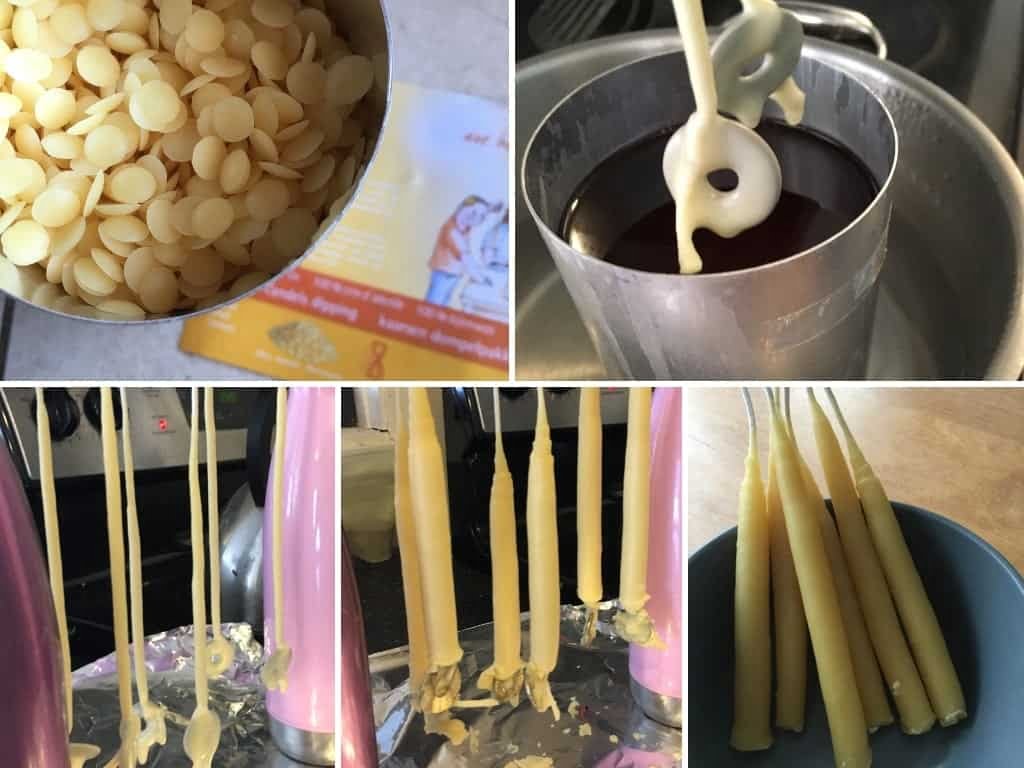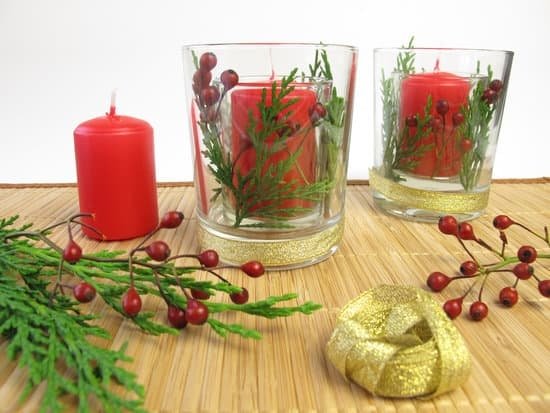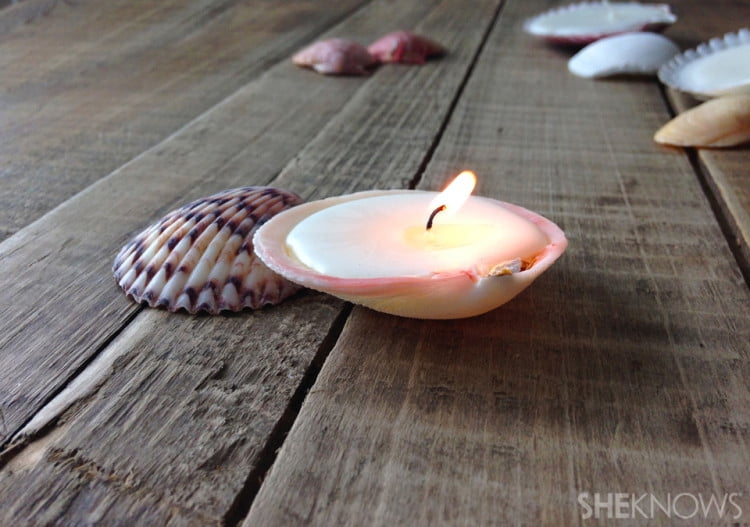When it comes to candle making, one of the most important factors to consider is how much fragrance oil to use. The scent of a candle is often what draws people in, so getting the right balance of fragrance oil is crucial. In this article, we will delve into the world of candle making and explore the proper measurement of fragrance oil to achieve the perfect scent balance in your candles.
Candle making is a popular and enjoyable hobby for many people. Whether you’re making candles for personal use or as gifts for loved ones, understanding how much fragrance oil to use can make all the difference in achieving your desired scent. Fragrance oils play a significant role in candle making, as they are responsible for the overall aroma that the candle will emit when lit.
In this comprehensive guide, we will take a closer look at the importance of proper measurement of fragrance oil, factors to consider when determining how much fragrance oil to use, and provide a step-by-step guide on measuring fragrance oil for candle making. Additionally, we will share tips and tricks for achieving the perfect scent balance in your candles and common mistakes to avoid when using fragrance oils in candle making.
Let’s dive into the art and science of creating beautifully scented candles.
Understanding Fragrance Oils in Candle Making
When it comes to candle making, fragrance oils play a crucial role in creating the perfect scented candle. These oils are specifically formulated for use in candles and are designed to disperse into the air when the candle is burned, filling the space with a pleasant aroma. Understanding fragrance oils and how to properly use them is essential for achieving the desired results in your candle making endeavors.
Benefits of Using Fragrance Oils
Fragrance oils offer a wide range of benefits when used in candle making. They come in a variety of scents, allowing candle makers to create unique and appealing products. Additionally, fragrance oils tend to have a stronger and longer-lasting scent compared to essential oils, making them a popular choice among candle makers.
Types of Fragrance Oils
There are two main types of fragrance oils used in candle making: synthetic and natural. Synthetic fragrance oils are created using synthetic compounds, while natural fragrance oils are derived from plant-based sources. Both types have their own set of advantages and can be used to achieve different scent profiles in candles.
Understanding Fragrance Load
The amount of fragrance oil used in candle making is often referred to as the “fragrance load.” This refers to the percentage of fragrance oil that is added to the wax. Understanding how much fragrance oil to use is important for creating candles with optimal scent throw without causing issues such as poor burn performance or overpowering scents.
By understanding the various aspects of fragrance oils in candle making, including types, benefits, and load percentages, you can ensure that your finished candles will have the perfect balance of scent for an enjoyable sensory experience.
Importance of Proper Measurement of Fragrance Oil
Understanding the Impact of Fragrance Oil Amount
When it comes to candle making, the amount of fragrance oil used can greatly impact the final product. Using too little fragrance oil can result in a weak or barely noticeable scent, while using too much can affect the candle’s performance and even pose safety risks. This makes proper measurement of fragrance oil a crucial step in the candle making process.
Ensuring Consistency and Quality
Properly measuring fragrance oil is essential for ensuring consistency and quality in your candles. By accurately measuring the amount of fragrance oil, you can replicate your desired scent every time you make a new batch of candles. This is especially important if you are selling your candles, as customers expect a consistent and high-quality product.
Achieving Optimal Scent Throw
The amount of fragrance oil used also affects the candle’s scent throw – the strength of the fragrance when the candle is burning. By measuring the correct amount of fragrance oil, you can achieve optimal scent throw, allowing your candles to fill a room with a pleasant aroma without being overwhelming. It’s important to strike a balance between using enough fragrance oil to achieve a strong scent throw without overdoing it.
Factors to Consider When Determining How Much Fragrance Oil to Use
When determining how much fragrance oil to use in candle making, there are several factors to consider in order to achieve the perfect balance of scent without compromising the quality of your candles. One important factor to consider is the type of wax you are using. Different waxes have different absorption rates, so it’s crucial to understand how much fragrance oil your specific wax can hold.
Another important factor to consider is the type of fragrance oil being used. Some scents are stronger than others, so it’s essential to take into account the potency of the fragrance when determining the appropriate amount to use.
Additionally, the size and type of the candle also play a role in determining how much fragrance oil to use. Larger candles will require more fragrance oil compared to smaller ones, and different types of candles, such as container candles or pillar candles, may also require varying amounts of fragrance oil.
It’s also important to take into consideration any additional additives or colorants you may be using in your candle making process, as these can affect the overall scent throw of your candles. Properly measuring and considering these factors will help ensure that you achieve the perfect aroma for your candles without over – or under-saturating them with fragrance oil.
| Factors to Consider | Details |
|---|---|
| Type of Wax | Different waxes have different absorption rates. |
| Type of Fragrance Oil | Consider the potency of the scent being used. |
| Candle Size and Type | Larger candles may require more fragrance oil compared to smaller ones. |
Step-by-Step Guide on Measuring Fragrance Oil for Candle Making
Measuring the right amount of fragrance oil is essential in candle making to achieve the perfect scent balance and ensure that your candles have a strong and pleasant aroma. Here is a step-by-step guide on how to measure fragrance oil for candle making:
- Determine the recommended fragrance oil usage rate for your specific type of candle. Different types of candles, such as paraffin wax, soy wax, or beeswax candles, have different recommended fragrance oil usage rates. It is important to follow these guidelines to avoid over-scenting or under-scenting your candles.
- Use a digital scale to measure the precise amount of fragrance oil needed for your candle recipe. It is important to be accurate in measuring the fragrance oil as even a small difference can impact the overall scent of the candle.
- When using multiple fragrance oils in one candle, calculate the total amount of fragrance oil needed based on the combined recommended usage rates of each individual fragrance oil. This will help you achieve a well-balanced scent without overpowering one fragrance over another.
- Add the measured fragrance oil to the melted wax at the recommended pouring temperature specified by the manufacturer. This will allow the fragrance oil to evenly disperse throughout the wax and create a consistent scent throw when the candle is burned.
It’s important to note that proper measurement of fragrance oil is crucial in achieving a high-quality scented candle with a strong and long-lasting aroma. Following these steps will help you ensure that your candles are perfectly scented every time.
| Step | Description |
|---|---|
| Determine Recommended Usage Rate | Different types of candles have different recommended usage rates for fragrance oils. |
| Use Digital Scale | Measure precise amount of fragrance oil needed for accuracy. |
| Calculate Total Amount | If using multiple fragrance oils, calculate total amount based on their combined recommended usage rates. |
| Add Fragrance Oil | Add measured fragrance oil to melted wax at recommended pouring temperature for even dispersion. |
Tips and Tricks for Achieving the Perfect Scent Balance in Your Candles
When it comes to candle making, achieving the perfect scent balance is essential in creating high-quality, fragrant candles. There are several tips and tricks that can help you achieve the desired scent balance in your candles, ensuring that they not only smell great but also burn evenly and cleanly.
Here are some tips and tricks for achieving the perfect scent balance in your candles:
- Use a fragrance calculator: Utilize a fragrance calculator to determine the appropriate amount of fragrance oil to use based on the type and size of the candle you are making. This tool takes into account various factors such as the type of wax used, the diameter of the candle, and the desired fragrance strength.
- Test different fragrance levels: It’s important to experiment with different levels of fragrance oil to find the perfect balance for your candles. Start by using the recommended usage rate for your specific candle size and type, then adjust as needed based on personal preference and customer feedback.
- Consider wax type: Different types of wax can hold varying amounts of fragrance oil. For example, soy wax typically requires a higher percentage of fragrance oil compared to paraffin wax. Be sure to consider the type of wax you are using when determining how much fragrance oil to add.
By following these tips and tricks, you can ensure that your candles have a well-balanced and pleasant scent that will delight customers and enhance their overall candle-burning experience.
Common Mistakes to Avoid When Using Fragrance Oils in Candle Making
When it comes to using fragrance oils in candle making, there are some common mistakes that beginners often make. Avoiding these mistakes is crucial in achieving the perfect scent balance in your candles. Here are some of the most common mistakes to avoid:
1. Overpowering Fragrance: One of the most common mistakes in candle making is using too much fragrance oil. This can result in an overpowering scent that can be unpleasant or even irritating to the senses. It’s important to follow recommended usage rates for fragrance oils based on the type of candle you are making (e.g. soy wax, paraffin wax, etc.) to achieve a pleasant and balanced scent.
2. Incorrect Measurement: Using the wrong measurement of fragrance oil can also lead to unsatisfactory results. Whether you’re using a measuring cup, scale, or dropper, it’s essential to measure the fragrance oil accurately according to the recommended usage rates. Even a small deviation from the recommended amount can significantly affect the quality of your candles.
3. Not Considering Candle Size: Another mistake to avoid is not taking into account the size of the candle when determining how much fragrance oil to use. Larger candles will require more fragrance oil compared to smaller ones to ensure that the scent is strong enough when the candle is burning.
By paying attention to these common mistakes and following proper guidelines for measuring and using fragrance oils in candle making, you can avoid potential issues and create high-quality scented candles that customers will love.
Recommended Fragrance Oil Usage Rates for Different Types of Candles
Different types of candles require different amounts of fragrance oil to achieve the perfect scent balance. It is important to understand the recommended fragrance oil usage rates for each type of candle to ensure that you are using the right amount for optimal results. Here are the recommended fragrance oil usage rates for different types of candles:
1. Container Candles: For container candles, it is generally recommended to use 6-10% fragrance oil by weight of the wax. This means that for every pound of wax, you would use 1 to 1.6 ounces of fragrance oil. This range allows you to adjust the strength of the scent based on personal preference.
2. Pillar Candles: Pillar candles, which are typically larger and have a more substantial presence, require a lower percentage of fragrance oil compared to container candles. It is recommended to use 3-6% fragrance oil by weight of the wax for pillar candles.
3. Taper Candles: Taper candles, which are long and narrow, should be infused with a smaller amount of fragrance oil compared to other types of candles. It is generally recommended to use 2-4% fragrance oil by weight of the wax for taper candles.
By following these recommended fragrance oil usage rates, you can ensure that your candles have a well-balanced and pleasant scent without overpowering or underwhelming the senses. It is also important to keep in mind that using too much fragrance oil can lead to issues such as poor burn performance and potential health hazards when the candle is lit.
Understanding the specific needs of each type of candle will help you achieve the perfect scent balance every time you make a new batch.
Conclusion and Final Thoughts on Fragrance Oil Usage in Candle Making
In conclusion, the proper measurement and usage of fragrance oils in candle making are crucial in achieving the perfect scent balance for your candles. Understanding the importance of using the right amount of fragrance oil will ensure that you create high-quality candles with a consistent and appealing aroma.
By following the recommended fragrance oil usage rates and considering various factors such as the type of wax and the size of the candle, you can produce candles that not only look beautiful but also smell delightful.
As discussed, there are several factors to consider when determining how much fragrance oil to use, including the type of wax, desired strength of scent, and the size of the candle. It is important to carefully measure and follow recommended usage rates to avoid overpowering or underwhelming scents in your candles.
Additionally, paying attention to tips and tricks for achieving the perfect scent balance will help you create candles that stand out and leave a lasting impression on anyone who experiences their aroma.
In essence, while there may be common mistakes to avoid when using fragrance oils in candle making, with proper understanding and practice, you can master the art of scent blending and create candles that truly captivate your senses. By taking into account all considerations and following a step-by-step guide for measuring fragrance oil, you can confidently embark on your candle making journey and produce beautiful creations with enchanting fragrances.
Remember that fragrance oils play a vital role in candle making, so embrace their potential by mastering how much to use to achieve the perfect balance of scents in your candles.
Frequently Asked Questions
What Is the Ratio of Oil to Wax in Candles?
The ratio of oil to wax in candles typically depends on the type of wax being used. In general, a common ratio is 1 ounce of fragrance oil per 1 pound of wax, but this can vary based on personal preference and the type of scent being used.
How Do You Calculate Fragrance Oil for Wax?
To calculate fragrance oil for wax, it’s important to consider the recommended fragrance load for the specific type of wax being used. This information can usually be found from the wax manufacturer or supplier.
Once you have this information, you can use a simple formula to determine the amount of fragrance oil needed based on the weight of the wax.
What Happens if You Put Too Much Fragrance Oil in a Candle?
Putting too much fragrance oil in a candle can lead to a variety of issues. The most common problem is that the candle will burn inefficiently and produce excess soot.
Additionally, an overpowering scent can be unpleasant and may even cause irritation for some people. It’s important to follow recommended fragrance load guidelines to avoid these issues while still achieving a pleasant scent throw in your candles.

Welcome to my candle making blog! In this blog, I will be sharing my tips and tricks for making candles. I will also be sharing some of my favorite recipes.





